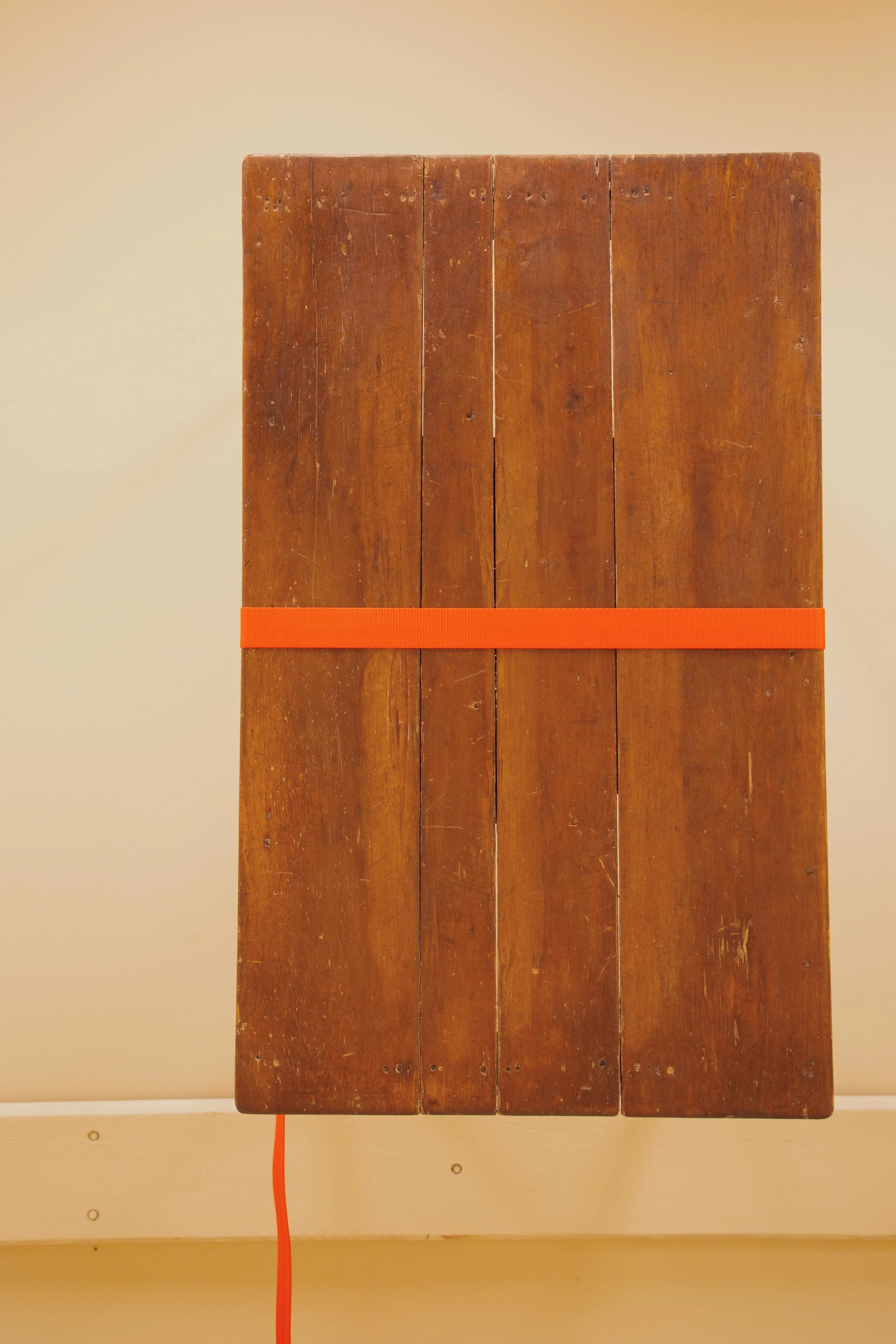Jose Dávila Untitled, 2022
Jose Dávila’s (b. Guadalajara, México, 1974) work originates from the symbolic languages that function within art history and Western visual
culture. These pictorial, graphic and sculptural languages are reconfigured as contradictory and contrasting
relations, taking the correspondence between form and content to its limit.
The artist represents these oppositions through different perspectives: the association between images and words; the structural disposition of materials which entails the possibility of a harmonious balance or disarray; the use of peripheral routes in order to define architectural space and the presence of objects. Dávila’s work is essentially a multidisciplinary endeavor that presents a series of material and visual aporias, these paradoxes permit the coexistence of frailty and resistance, rest and tension, geometric order, and random chaos.
Jose Dávila uses the appropriation and recontextualization of iconic artworks in order to question the way in
which we recognize and relate visually. A series of translations and editing procedures are employed in order to modify the normal procedure of identification; materials are modified, elements are highlighted or concealed, and the languages of art movements are reproduced with local resources and within a contemporary context.
Dávila’s sculptural work is based on the specificity of the employed materials, their origin, symbolic value, and their formal characteristics are elements that take great significance; industrial materials interact with organic raw materials. Influenced by his education in architecture, Dávila arranges objects as if they were basic elements of drawing (point, line, and plane) for creating systems that exemplify notions of equilibrium, stability, and permanence. With these sculptures, Dávila intends to provide visibility to the physical processes that are required in order for things to maintain their shape and occupy space in a specific manner. Human intervention and the material disposition of things produce hybrid systems that respond to structural intuitions; technique unfolds itself as a poetic dimension.
Jose Dávila studied architecture at the Instituto Tecnológico y de Estudios Superiores de Occidente. He considers himself a self-taught artist, with an intuitive training.
- Adeline de Monseignat
- Adolfo Riestra
- Alma Allen
- Ana Pellicer
- Atelier Van Lieshout
- Brian Thoreen
- Dante Medina
- EWE Studio
- Georgina Quintana
- Germán Venegas
- Héctor Esrawe
- Héctor Zamora
- Hollie Bowden
- Joe Sweeney x Hollie Bowden
- Jorge Yázpik
- Jose Dávila
- Julio Galán
- Loup Sarion
- Manuel Bañó
- Mario Garcia Torres
- MARROW
- Martín Ramírez
- Miguel Calderón
- MILENA MUZQUIZ
- Nahum B. Zenil
- Panorammma
- Pedro Reyes
- Perla Krauze
- Pia Camil
- Roberto Turnbull
- ROOMS
- RUBÉN ORTIZ TORRES
- Tania Candiani
- Tania Perez Córdova
- Tezontle
- THEO MICHAEL
- Umberto Bellardi Ricci
- VISSIO
- Xavier Lórand
- Adeline de Monseignat
- Adolfo Riestra
- Alma Allen
- Ana Pellicer
- Atelier Van Lieshout
- Brian Thoreen
- Dante Medina
- EWE Studio
- Georgina Quintana
- Germán Venegas
- Héctor Esrawe
- Héctor Zamora
- Hollie Bowden
- Joe Sweeney x Hollie Bowden
- Jorge Yázpik
- Jose Dávila
- Julio Galán
- Loup Sarion
- Manuel Bañó
- Mario Garcia Torres
- MARROW
- Martín Ramírez
- Miguel Calderón
- MILENA MUZQUIZ
- Nahum B. Zenil
- Panorammma
- Pedro Reyes
- Perla Krauze
- Pia Camil
- Roberto Turnbull
- ROOMS
- RUBÉN ORTIZ TORRES
- Tania Candiani
- Tania Perez Córdova
- Tezontle
- THEO MICHAEL
- Umberto Bellardi Ricci
- VISSIO
- Xavier Lórand
×





